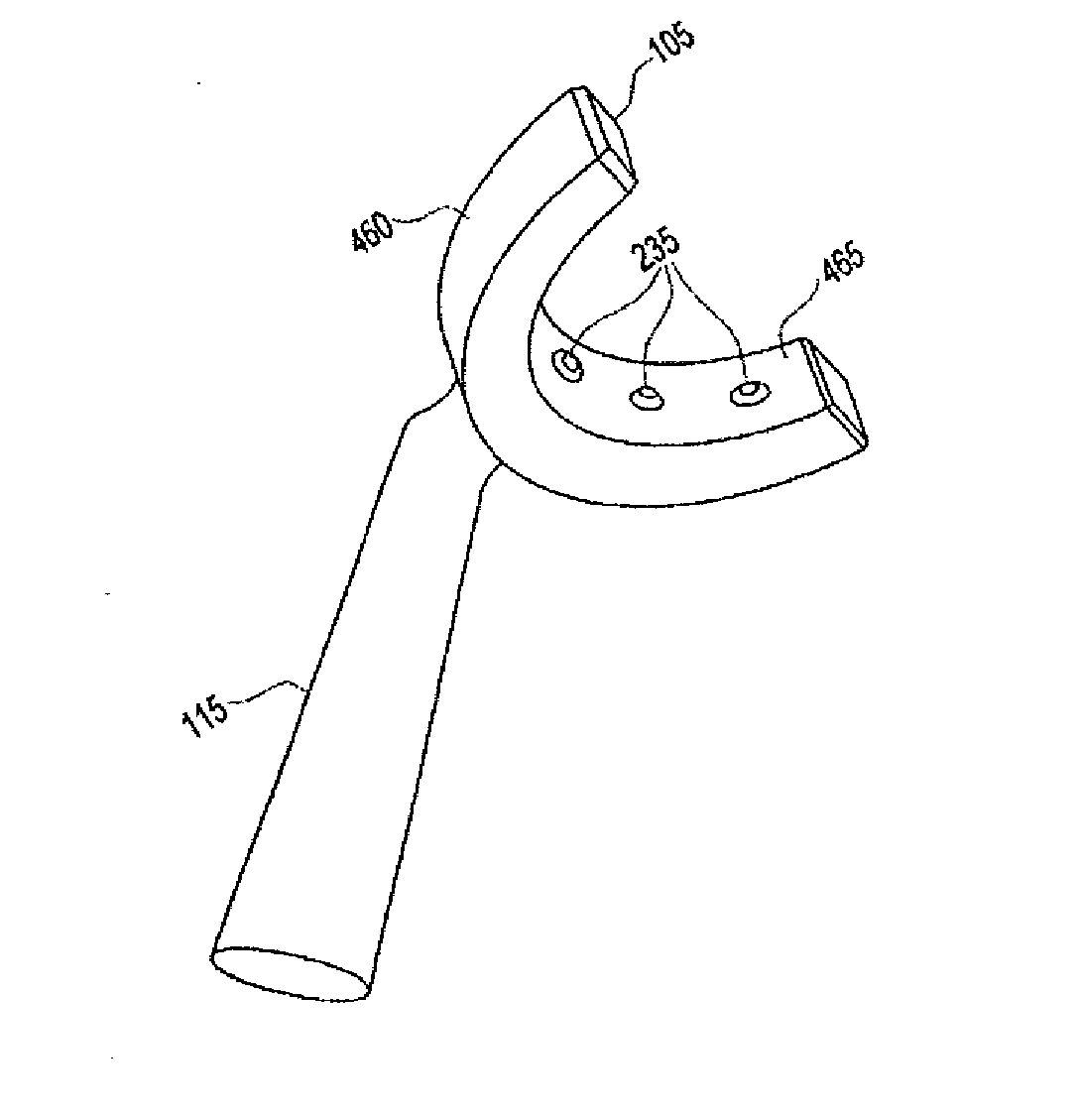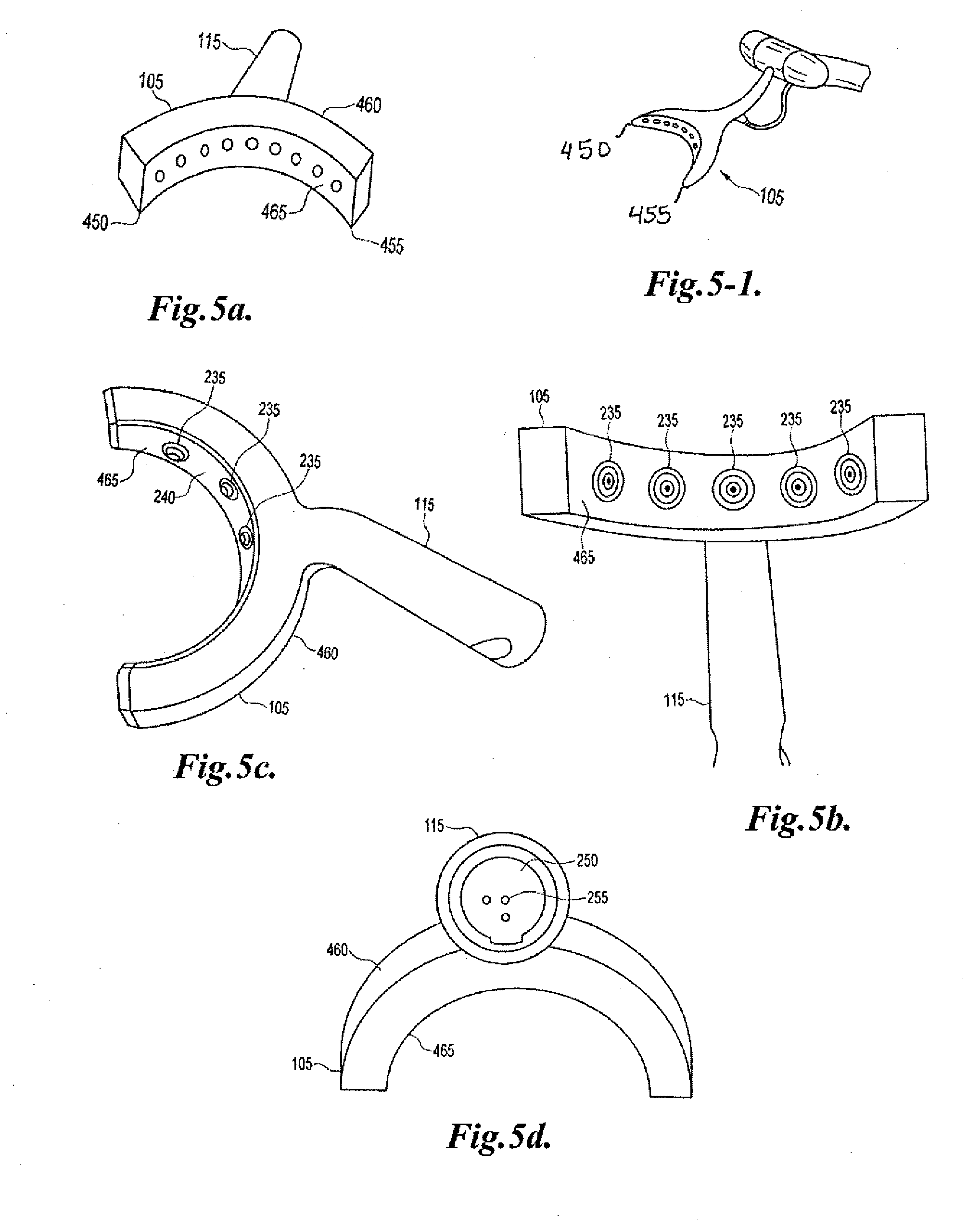Illumination system for dental applications
a technology of dental applications and a slitting system, applied in the field of dental slitting systems, can solve the problems of tooth decay, cavities or other damage, and the time of dental slitting and bleaching is much longer
- Summary
- Abstract
- Description
- Claims
- Application Information
AI Technical Summary
Benefits of technology
Problems solved by technology
Method used
Image
Examples
example 1
[0264] Individual emitters were characterized in terms of the angular distribution of their radiant emissions. Royal Blue emitters may provide more radio-metric power than Blue emitters, for example, as shown in FIG. 25a. It is possible that some emitters may provide other radiometric power, though on average, an array may function as desired.
example 2
[0265] Following completion of the characterization of individual emitters, a calculation for an emitter array geometry that could deliver the target optical power throughout most of the target zone of use (Zone 1) was carried out.
[0266] The prototype of an 18-emitter array geometry which could deliver the target radiometric power (130 mW / cm″2) through out most of Zone 1 using an IDEO optical analysis tool was constructed and radiometric power delivered across the surface of the teeth was measured. As shown by the graph in FIG. 25b, the prototype array delivered the target optical power throughout much of Zone 1. FIG. 25b shows a plot of radiometric power as a function of position along tooth surface. These results from the full emitter array optical measurements were encouraging, with much of Zone 1 falling within the target power range. These results gave positive results for an effective teeth whitening device utilizing an array of approximately 20 LuxeonV emitters.
[0267] Exper...
experiment 4
[0272]FIG. 31 shows a block diagram of a top level Electrical System for the illumination product and a discussion of the primary novel issues, such as the design of appropriate driver circuitry for an array of LuxeonV emitters.
[0273] Electrical Architecture
I. The hardware design for the prototype included the following elements:
[0274] 1. Keypad—A 14 pad keypad was used to duplicate the keypad functionality of the present system.
[0275] 2. Speaker
[0276] An exiting speaker and speaker circuitry, such as that used in BriteSmile® 3000PB was used and the details are presented below.
[0277] 3. Main controller
[0278] The main controller and associated circuitry of BriteSmile® 3000 PB was used in the prototype. LCD—The LCD and LCD interface was also the same as used in BriteSmile® 3000 PB. Interface to LED controller—The interface to the LED controller was a serial port interface. LED driver control—There were 18 high power LEDs to operate, as exemplified. These LEDs were driven eithe...
PUM
 Login to View More
Login to View More Abstract
Description
Claims
Application Information
 Login to View More
Login to View More - R&D
- Intellectual Property
- Life Sciences
- Materials
- Tech Scout
- Unparalleled Data Quality
- Higher Quality Content
- 60% Fewer Hallucinations
Browse by: Latest US Patents, China's latest patents, Technical Efficacy Thesaurus, Application Domain, Technology Topic, Popular Technical Reports.
© 2025 PatSnap. All rights reserved.Legal|Privacy policy|Modern Slavery Act Transparency Statement|Sitemap|About US| Contact US: help@patsnap.com



